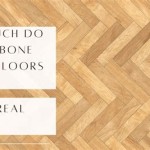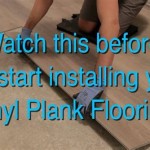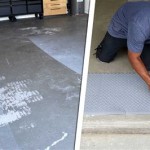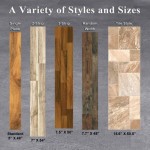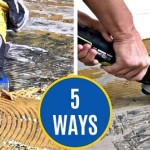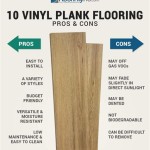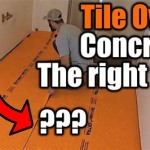How To Replace Broken Floor Boards
Replacing broken floor boards, whether due to water damage, insect infestation, or simply wear and tear, is a common home repair project. While it might seem daunting, with the right tools, materials, and a methodical approach, replacing damaged floor boards can be a manageable task for a relatively handy homeowner. This article provides a comprehensive guide to successfully replacing broken floor boards, ensuring a smooth and durable repair.
Before starting any repair, a thorough assessment of the damage is crucial. Identify all damaged areas and determine the extent of the deterioration. This will help in accurately estimating the amount of replacement material needed and identifying any underlying issues that may have caused the damage, such as leaks or pest problems. Addressing these root causes is essential to prevent future floor board failures.
Accurately identifying the species of wood, dimensions, and grain direction of the existing floor boards is also an important precursor to a successful repair. Matching the replacement boards as closely as possible will ensure a seamless and aesthetically pleasing finish. Discrepancies in wood type or grain can result in noticeable variations in color, texture, and overall appearance.
Gathering the Necessary Tools and Materials
Proper preparation is key to any successful home repair project. Before starting the floor board replacement, assembling the necessary tools and materials is paramount. This not only streamlines the process but also minimizes disruptions and potential delays during the repair.
The required tools typically include a circular saw, a reciprocating saw (also known as a Sawzall), a pry bar, a hammer, a chisel, a measuring tape, a pencil, a utility knife, a wood block, safety glasses, and work gloves. A circular saw is used for making precise cuts across the grain of the wood, while a reciprocating saw is ideal for cutting through nails or screws and accessing tight spaces. The pry bar is essential for lifting the damaged floor boards, and the hammer and chisel are used for fine-tuning the fit of the replacement boards. Safety glasses and work gloves are non-negotiable for personal protection during the demolition and installation phases.
In terms of materials, the most important element is the replacement floor boards. As mentioned earlier, matching the existing floor boards in terms of wood species, dimensions, and grain pattern is crucial for a visually consistent result. Beyond the boards themselves, wood glue, construction adhesive, and appropriate fasteners (nails or screws) are needed to secure the new boards. Depending on the subfloor material, the type of fastener may need to be adjusted for optimal grip. Wood filler matching the color of the floor boards can be used to fill any small gaps or imperfections after installation. Finally, sandpaper of varying grits is needed for smoothing out the repaired area before finishing.
Removing the Damaged Floor Boards
The removal of the damaged floor boards is a delicate process that requires precision and caution to avoid further damage to the surrounding boards or the subfloor. The goal is to remove the damaged sections cleanly and efficiently while minimizing the risk of splinters, cracks, or other complications.
The first step involves scoring the perimeter of the damaged floor board with a utility knife. This helps to prevent chipping or splintering of the adjacent boards during removal. The score line should be clean and deep enough to effectively sever the finish and prevent it from pulling up with the damaged board.
After scoring, the next step is to use a circular saw to cut along the score lines. The saw blade depth should be set to the thickness of the floor board to avoid cutting into the subfloor. These cuts will essentially create an outline around the damaged area, allowing for easier removal.
Once the outline is cut, a reciprocating saw is used to cut through any nails or screws that are holding the damaged board in place. This step requires careful maneuvering to avoid damaging the subfloor or adjacent boards. The saw blade should be inserted between the floor board and the subfloor, and the cut should be made slowly and steadily.
With the fasteners cut, a pry bar and wood block are used to carefully lift the damaged floor board. The wood block is placed under the pry bar to protect the surrounding floor boards from damage. The pry bar should be used gently and gradually to avoid splintering or cracking the wood. If the board is particularly stubborn, it may be necessary to score and cut it into smaller sections for easier removal.
After the damaged floor board is removed, any remaining nails, staples, or adhesive should be removed from the subfloor using pliers, a scraper, or a chisel. The subfloor should be cleaned thoroughly to remove any debris or dust before installing the replacement board.
Installing the Replacement Floor Boards
Installing the replacement floor boards requires careful attention to detail to ensure a proper fit and a secure bond. The replacement board should be cut precisely to match the dimensions of the removed section, accounting for any slight variations or imperfections.
Before installing the replacement board, it is advisable to dry-fit it to ensure a proper fit. The board should sit flush with the surrounding floor boards, with no gaps or overlaps. If necessary, the board can be trimmed or sanded to achieve a perfect fit.
Once the fit is satisfactory, a bead of wood glue is applied to the edges of the replacement board and a layer of construction adhesive is applied to the subfloor where the board will be placed. The wood glue provides additional bonding strength, while the construction adhesive helps to secure the board to the subfloor.
The replacement board is carefully positioned and pressed firmly into place. It is important to ensure that the board is aligned properly with the surrounding floor boards and that there are no gaps or uneven surfaces.
Fasteners, such as nails or screws, are used to further secure the replacement board. The type of fastener and the spacing between them will depend on the type of subfloor and the thickness of the floor board. The fasteners should be driven in at an angle to provide maximum holding power.
After the fasteners are in place, any excess glue or adhesive should be wiped away with a damp cloth. The repaired area should be allowed to dry completely before proceeding to the next step.
Finishing the Repair
Once the replacement board is securely installed, the final step involves finishing the repair to blend it seamlessly with the surrounding floor. This process typically includes sanding, filling gaps, and applying a finish that matches the existing floor.
Sanding is performed to smooth out any imperfections or uneven surfaces in the repaired area. Start with a coarse-grit sandpaper (e.g., 80-grit) to remove any major bumps or ridges, and then gradually progress to finer grits (e.g., 120-grit, 220-grit) to achieve a smooth, polished surface. Sand in the direction of the wood grain to avoid scratching or damaging the wood.
Any small gaps or imperfections can be filled with wood filler that matches the color of the floor boards. Apply the wood filler with a putty knife, making sure to overfill slightly to allow for shrinkage during drying. Once the filler is dry, sand it smooth with fine-grit sandpaper.
The final step is to apply a finish that matches the existing floor. This may involve staining, sealing, or applying a topcoat of polyurethane. It is crucial to match the color and sheen of the existing finish to ensure a seamless blend. Apply the finish according to the manufacturer's instructions, taking care to avoid drips or runs.
Multiple coats of finish may be necessary to achieve the desired level of protection and durability. Allow each coat to dry completely before applying the next. After the final coat has dried, the repaired area is ready for use.
By following these steps carefully and attentively, replacing broken floor boards can be a successful and rewarding home improvement project. The result will be a restored floor that is both aesthetically pleasing and structurally sound, enhancing the overall value and appeal of the home.

How To Replace A Damaged Hardwood Floor Board Diy Family Handyman

How To Repair Floorboards Ideas Advice B Q

How To Replace A Damaged Hardwood Floor Board Diy Family Handyman

Removing Replacing A Damaged Hardwood Flooring Board

How To Replace A Damaged Hardwood Floor Board Diy Family Handyman

How To Replace Damaged Hardwood Floor Boards

How To Repair Floorboards Ideas Advice B Q

How To Replace A Damaged Hardwood Floor Board Diy Family Handyman

Replace Damaged Board Floor Sheathing Fine Homebuilding

How To Replace A Damaged Hardwood Floor Board Diy Family Handyman
See Also
